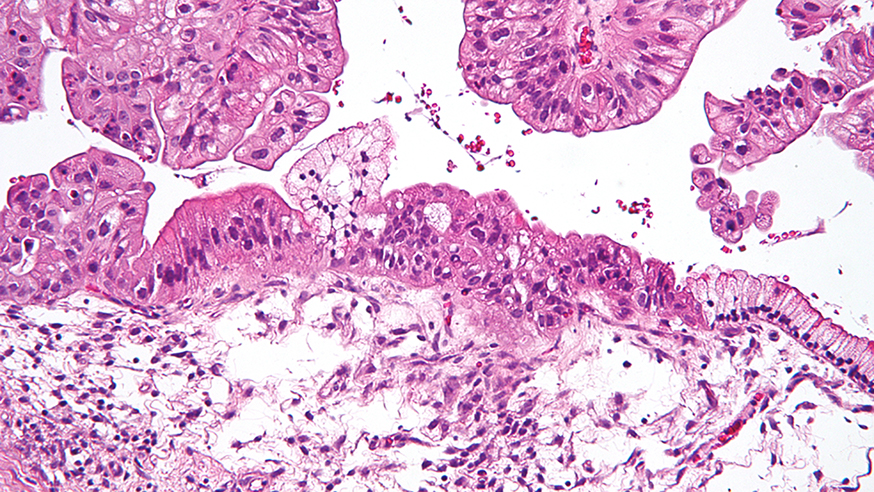
Intermediate magnification micrograph of a low malignant potential (LMP) mucinous ovarian tumour. Image credit: Copyright © 2009 Michael Bonert. Licence: CC BY-SA 3.0.
With Mother’s Day just past, I’ve been reflecting on the ups and downs of the last two years.
I remember when my mum first told me about the pain and bloating she was feeling. I wasn’t working at The Institute of Cancer Research then and didn’t recognise the early warning signs of ovarian cancer. A misdiagnosis also helped to cloud the symptoms and it meant that her tumours were discovered quite late.
She has now undergone her first round of chemotherapy and we are waiting to hear what the next steps will be.
When I joined the ICR a few months ago, I was delighted to see how much research could help to improve things for women with ovarian cancer in the future, and even alert them to the risks before cancer develops.
Research progress
For example, research involving Dr Tim Yap, a Clinician Scientist at the ICR and Consultant Medical Oncologist at The Royal Marsden, has examined different factors that influence how women with a particular type of ovarian cancer will respond to a new treatment called olaparib – a PARP-1 inhibitor.
The research looked at patients with errors in a gene called BRCA and hopes to eventually identify women who are most likely to respond well to the drug and those who could benefit from additional treatment before they get olaparib. This kind of research is vital to ensure new drugs are given to the right people for maximum effect.
Much broader discoveries will also help women like my mum in the future. Having seen how chemotherapy impacts someone first-hand, it’s great to see advances in a new generation of targeted therapies.
Scientists here at the ICR are constantly identifying new cancer weak spots that could be targets for new drugs. Perhaps that’s why the ICR discovers more new cancer drugs than any other academic centre in the world. By analysing vast amounts of data from thousands of cancer patients, we could develop patient-tailored approaches that ‘read’ a person’s DNA and only attack defective cells. This is a stark contrast to the scattergun approach of conventional chemotherapy, which can attack healthy cells too.
Identifying people at risk
It’s also heart-warming to know that the ICR is working to try to stop people getting ovarian cancer – and other types of cancer – altogether.
About one in seven of the women who develop ovarian cancer in the UK get it because they have a specific gene mutation. If this was known before they got cancer, it could give them the option of their ovaries removed by keyhole surgery. Identifying people with cancer due to specific gene mutations, and offering testing to their relatives, is a very effective way of helping those most at risk before they develop the disease.
I know it can take a long time to get some of these new advances to patients, but it’s great to see the ICR is working to improve this too. So, all in all, I’m hopeful that we will defeat ovarian cancer one day. And, what’s more, many of these advances aren’t specific to ovarian cancer and could benefit all cancer patients in the future.

This blog post is licensed under a Creative Commons Attribution 4.0 International License.
comments powered by